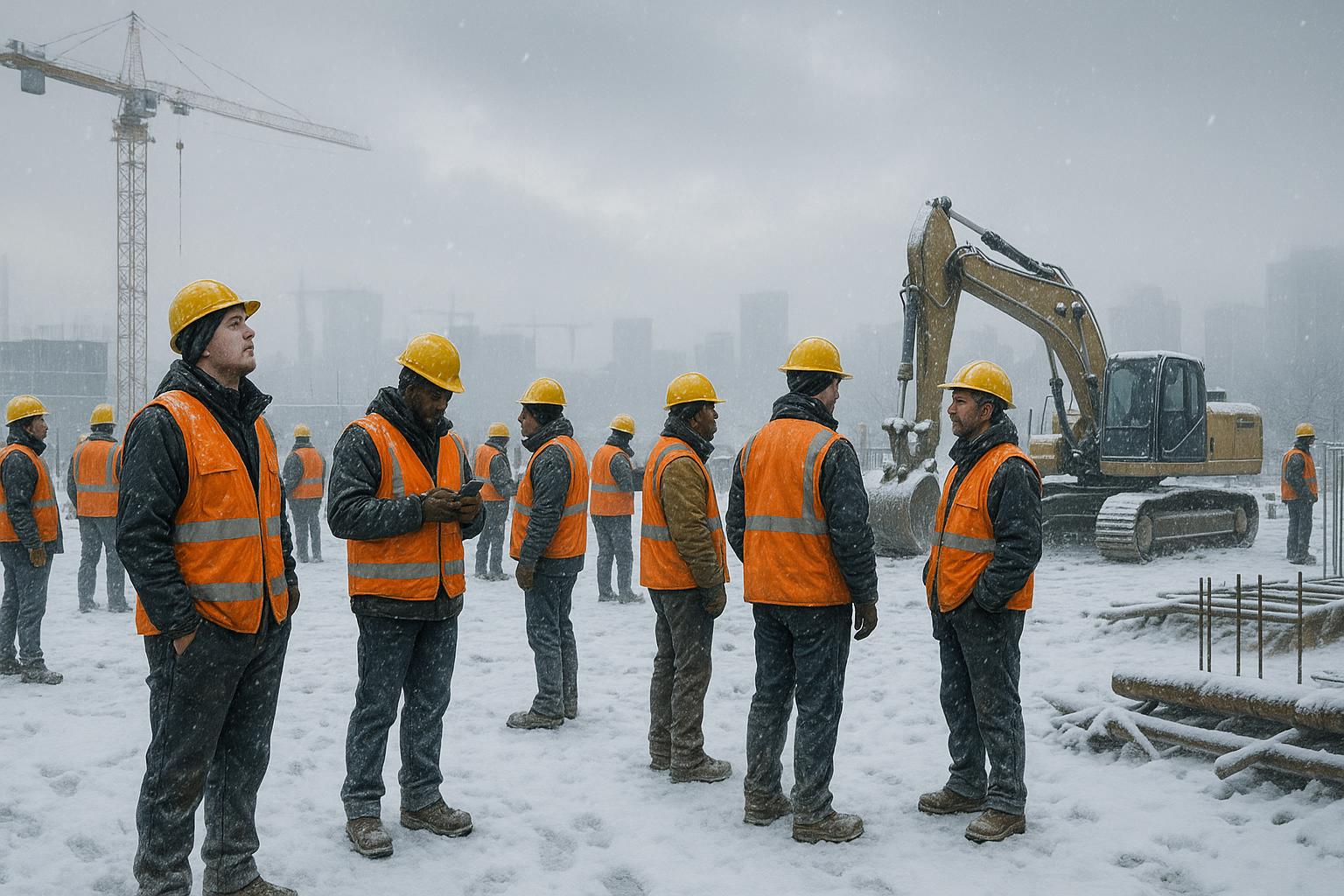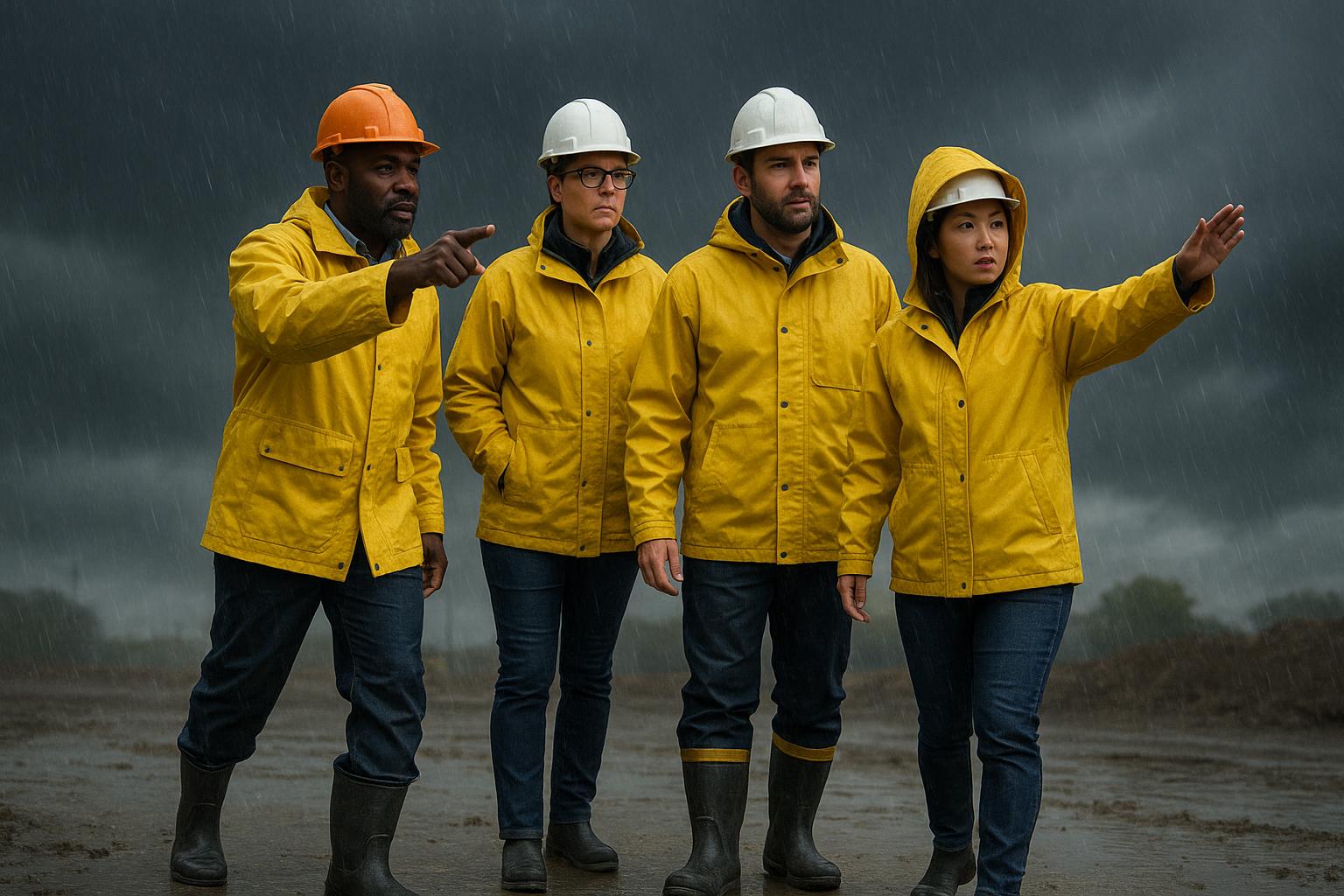Sun safety for outdoor workers is crucial, as sun exposure is a serious workplace hazard, especially for outdoor workers in industries like construction, agriculture, landscaping, and roofing. Prolonged exposure to ultraviolet (UV) radiation increases the risk of sunburn, heat stress, eye damage, and even skin cancer.
Many workers underestimate the dangers of UV exposure, but skin damage accumulates over time, leading to long-term health risks. Implementing sun safety measures like sunscreen use, UV-protective clothing, and proper eyewear can significantly reduce the risk of skin and eye damage.
Today, we will discuss why sun protection is critical, the best ways to shield yourself from UV radiation, and how to implement sun safety in the workplace.
Why Sun Safety Matters in the Workplace
The sun emits harmful ultraviolet (UV) radiation, which penetrates the skin and eyes, leading to:
- Sunburn – Short-term damage causing redness, pain, and peeling skin.
- Premature Skin Aging – Long-term exposure accelerates wrinkles and age spots.
- Skin Cancer – The most serious consequence of chronic UV exposure.
- Eye Damage – UV rays contribute to cataracts, macular degeneration, and vision loss.
The risks are higher for workers who spend long hours outdoors without proper protection. Even on cloudy days, up to 80% of UV rays still penetrate the atmosphere, making sun protection necessary year-round.
Prevention and Elimination Tactics
1. Proper Use of Sunscreen
Sunscreen is one of the easiest and most effective ways to protect the skin from UV damage.
- ✅ Use broad-spectrum sunscreen that protects against both UVA and UVB rays.
- ✅ Choose SPF 30 or higher for outdoor work.
- ✅ Apply 15–30 minutes before going outside and reapply every two hours.
- ✅ Cover all exposed skin, including the face, neck, ears, and hands.
- ✅ Use water-resistant sunscreen when sweating or working near water.
Workers should be encouraged to keep sunscreen at job sites and apply it as part of their daily routine.
2. Wearing UV-Protective Clothing
Clothing acts as the first line of defense against UV radiation.
- ✅ Wear long-sleeved shirts and pants made of lightweight, breathable fabrics.
- ✅ Choose UV-rated clothing with UPF (Ultraviolet Protection Factor) for better protection.
- ✅ Opt for light-colored clothing that reflects sunlight instead of absorbing heat.
- ✅ Wear a wide-brimmed hat or a hard hat with a neck flap to shield the face and neck.
- ✅ Use UV-rated gloves for additional skin protection.
Proper clothing reduces direct sun exposure and minimizes the risk of burns and skin cancer.
3. Protecting Your Eyes from UV Radiation
UV radiation also damages the eyes, increasing the risk of:
- Cataracts (clouding of the eye’s lens).
- Macular degeneration (leading cause of vision loss).
- Photokeratitis (temporary but painful sunburn of the eye).
- ✅ Wear safety sunglasses with 100% UVA/UVB protection.
- ✅ Choose wraparound sunglasses to block side exposure.
- ✅ Use polarized lenses to reduce glare and eye strain.
Proper eyewear is especially important for workers near reflective surfaces like water, metal, or concrete, where UV exposure is intensified.
4. Creating a Sun-Safe Work Environment
Employers can reduce sun exposure risks by implementing shade structures and schedule adjustments.
- ✅ Provide shaded break areas for workers to cool down.
- ✅ Schedule outdoor work for early mornings or late afternoons when UV exposure is lower.
- ✅ Encourage workers to take breaks in shaded areas instead of staying in direct sunlight.
Implementing these measures ensures workers stay cooler and healthier in the long run.
Importance of Sun Safety
- 1 in 5 Americans will develop skin cancer by age 70 due to UV exposure. (Source: Skin Cancer Foundation, 2023)
- UV exposure is the leading cause of 90% of all skin cancers. (Source: American Academy of Dermatology, 2023)
- Outdoor workers are 3.5 times more likely to develop skin cancer than indoor workers. (Source: Centers for Disease Control and Prevention – CDC, 2023)
- Up to 80% of UV rays penetrate clouds, meaning sun protection is necessary even on cloudy days. (Source: Environmental Protection Agency – EPA, 2023)
- Workers who wear sunscreen daily reduce their risk of skin cancer by 50%. (Source: National Cancer Institute, 2022)
- UV radiation exposure increases by 25% for every 1,000 feet above sea level, making protection even more critical at high altitudes. (Source: World Health Organization – WHO, 2023)
These statistics highlight the serious risks of sun exposure and the necessity of sun safety measures in outdoor work environments.
How You Can Use This Information in Your Workplace
1. Always Apply Sunscreen Before Work
- Use SPF 30 or higher and reapply every two hours.
- Keep sunscreen available on-site for workers.
2. Wear UV-Protective Clothing and Accessories
- Choose long-sleeved, UV-rated shirts and pants.
- Wear a wide-brimmed hat and sunglasses with UV protection.
3. Take Breaks in the Shade
- Avoid direct sun exposure between 10 AM and 4 PM when UV radiation is strongest.
- Use shaded areas for rest breaks and hydration.
4. Educate and Encourage a Sun-Safety Culture
- Train workers on sun protection best practices.
- Promote awareness of skin cancer risks and preventive measures.
5. Get Regular Skin Checkups
- Encourage workers to monitor their skin for abnormal moles or spots.
- Seek medical evaluation for any unusual skin changes.
By adopting these sun safety measures, workers and employers can reduce the risk of skin cancer, prevent sun-related illnesses, and create a safer outdoor work environment.
Sun exposure is a serious workplace hazard, but proper precautions can significantly reduce risks. Wearing sunscreen, UV-protective clothing, and safety sunglasses, along with limiting direct sun exposure, helps prevent sunburn, skin cancer, and eye damage.
Take action today—apply sunscreen, wear protective gear, and advocate for sun safety in your workplace. A well-protected workforce is a healthier and more productive workforce!



